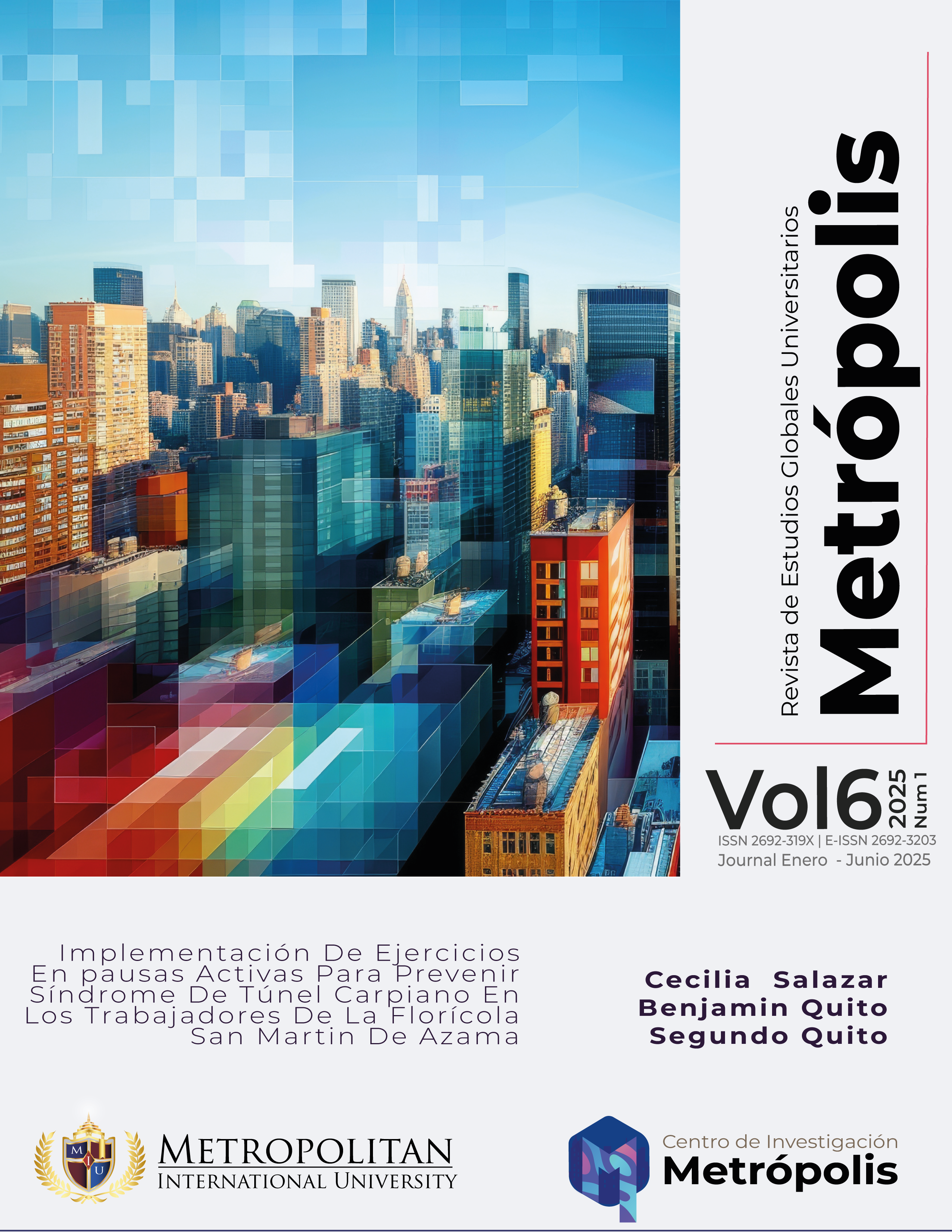Implementation of Exercises During Active Breaks to Prevent Carpal Tunnel Syndrome in Workers at the San Martin de Azama Floriculture Plant
Keywords:
active breaks, prevention, exercises, healthAbstract
The floriculture sectors, like other industries with high labor demand, involve activities requiring repetitive limb movements, which often lead to musculoskeletal injuries. These injuries directly impact workers’ health, company productivity, absenteeism rates, and labor quality. Ecuador is one of the world’s leading flower-exporting countries, making it essential to research carpal tunnel syndrome (CTS) prevention. Given the limited information on this topic, further investigation was necessary to understand its effects and propose effective solutions. This academic article aims to implement exercises during active breaks to prevent CTS among workers at San Martin de Azama floriculture. A descriptive methodology with a qualitative approach was used, based on the observation of various tasks performed at different workstations. This study covers crucial topics related to CTS prevention, including anatomy, physiology, pathophysiology, clinical presentation, symptoms, and risk factors, to improve reader comprehension and awareness. The findings highlight the necessity of implementing CTS prevention exercises, as agricultural workers—especially those involved in cultivation and post-harvest processes—perform repetitive tasks daily. The risk increases significantly during peak seasons, such as preparations for Mother’s Day and Valentine’s Day, often leading to the syndrome's development. Given the high labor demand in the flower industry, preventive measures are essential to ensure workers' well-being, improve performance, and maintain operational efficiency. In conclusion, integrating preventive exercises into daily routines can help reduce the risk of CTS, minimize absenteeism, and improve workers’ overall health. Promoting awareness campaigns, ergonomic interventions, and proper training is crucial to enhancing working conditions, benefiting both employees and the industry.

Downloads
Published
How to Cite
Issue
Section
License

This work is licensed under a Creative Commons Attribution-NonCommercial-ShareAlike 4.0 International License.



